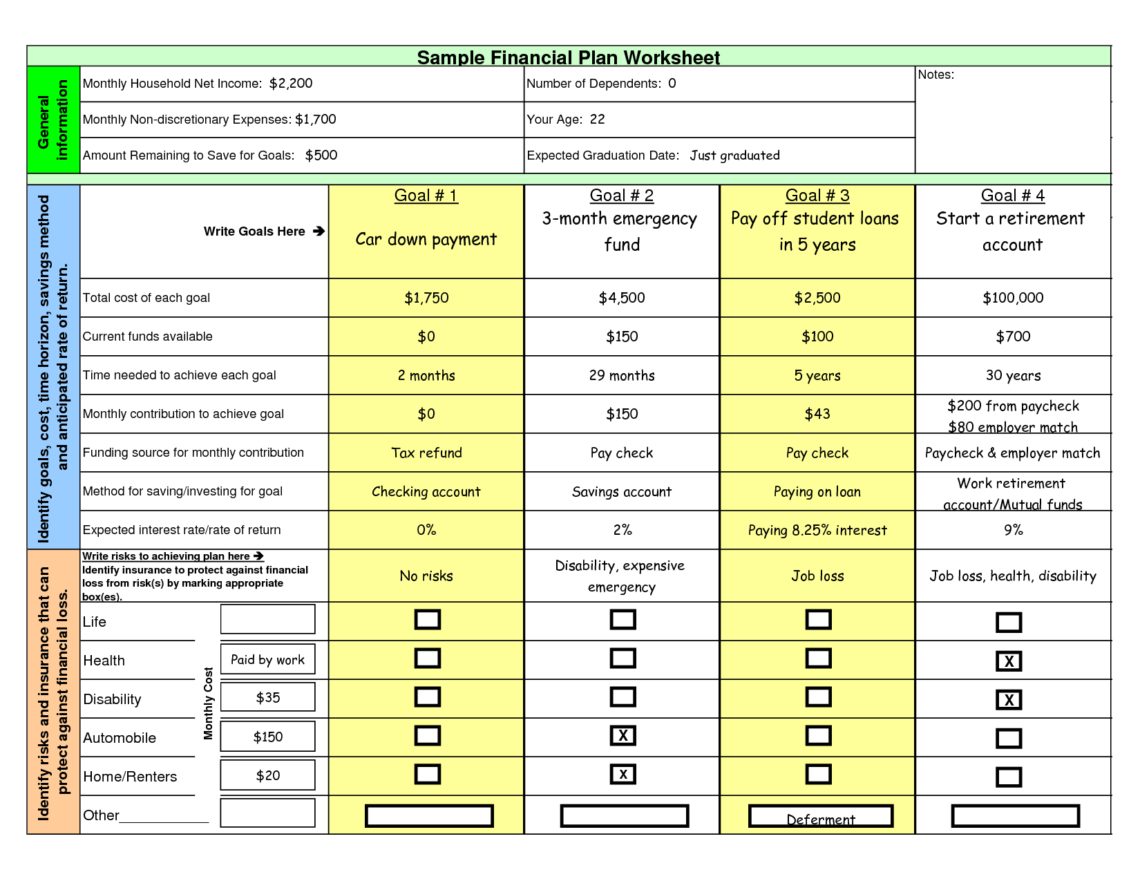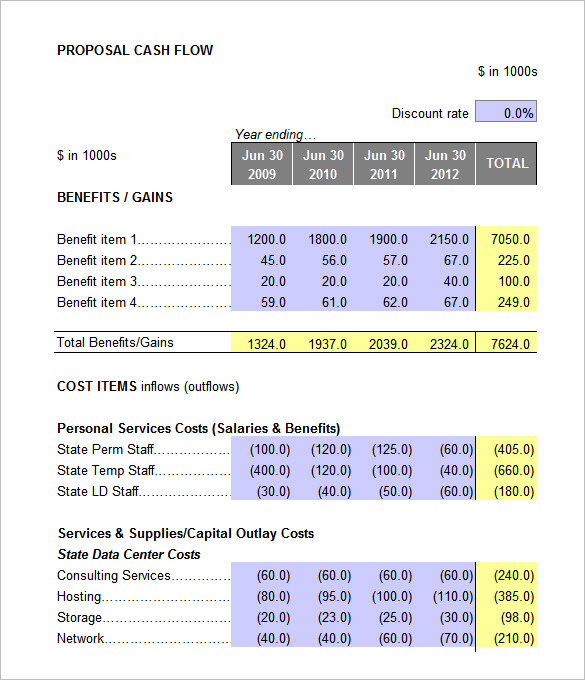
A business plan is a written description of your business's future. That's all there is to it--a document that desribes what you plan to do and how you plan to do it. If you jot down a paragraph Jan 08, · Financial Statements Do Not Cover Non-Financial Issues. The financial statements do not address non-financial issues, such as the environmental attentiveness of a company's operations, or how well it works with the local community. A business reporting excellent financial results might be a failure in these other areas Feb 18, · 4. Financial plan. One of the final elements in your business plan is the financial statements. While the financial plan is a very important section, it’s appropriate for it to come last, because if the executive summary is a discussion of all that is to follow, the financial section is a recap of all that precedes it
The 4 Must-Have Components of a Business Plan | Constant Contact
These plans give a current landscape of your small business and forecast the future vision and plans of the business. Creating financial statements for your small business starts with your day to day bookkeeping.
You will use pull and organize the data from these records to put together your financial statements, do financial analysis business plan. Here are the types of financial statements and tips on how to create them:.
A balance shows the assets, liabilities and shareholder equity during a specific period, do financial analysis business plan. To create a balance sheet, start by listing your assets on the left side of the page including cash you have in hand and in the bank, the value of the equipment you own, do financial analysis business plan, the value of the inventory you have in stock and any other financial assets.
On the right side of the page list your liabilities including accounts payable, credit card balances, bank loans and any other money your company owes. Finally, total your assets and liabilities and then subtract your liabilities from your assets. The amount left is known as owner equity. An income sheet shows revenues, expenses and income or loss for a period.
First, gather all types of earnings during the time period the statement will cover, do financial analysis business plan. These sources of earnings could be wholesale and retail sales or income from renting out propriety. Next total up all of your expenses such money spent on materials, payroll, advertising, utilities, equipment and rent on business properties.
You can find your bottom line by subtracting your total expenses from your total income. A statement of cash flow shows the inflows and outflows of cash and the ending balance during a period. The statement of cash flows has three sections operating activitiesinvesting activities and financing activities. What Should Be Included in a Financial Statement?
How Do I Write a Financial Plan for My Business? A financial statement reports the financial health and activity to potential investors and creditors. Since the report is sent to external stakeholders, a business must prepare their reports according to the generally accepted accounting principles of the United States.
This makes it easier for investors and creditors to compare the financial health of your companies to other by comparing financial statements. Assets: probable forecasted economic benefits obtained or managed by an external entity due to past transactions. Comprehensive income : change in equity net assets during a period from transactions and other events and circumstances from external sources.
It includes all changes in equity during a period except those resulting from investments by owners and distributions to owners. Distributions to owners: decreases in net assets resulting from transferring assets, rendering services, or incurring liabilities to owners. Distributions to owners decrease ownership interest. Equity : residual interest in the assets that remain after deducting its liabilities.
In your company, equity is the ownership interest. Expenses: outflows, uses of assets or incurring liabilities during a period from delivering or producing goods or services that make up your central operations.
Gains : increases in equity net assets from business transactions and from all other transactions except those do financial analysis business plan result from revenues or investments by owner. Investments by owners : increases in net assets resulting from transfers to it from other entities of something of value to obtain or increase ownership interest or equity in it.
Liabilities : probable do financial analysis business plan sacrifices of economic benefits from present obligations to transfer assets or provide services in the future because of past transactions or events. Losses : decreases in equity net assets from all business transactions and events and circumstances affecting a business during a period except that result from expenses or distributions to owners. Business planning or forecasting is the view of your business starting today and going into the future.
There are two main purposes of the financial section of your business plan, do financial analysis business plan. First, this information is needed by potential investors, venture capitalists, angel investors and anyone else with a financial stake in your business.
The second, and arguably, the most important purpose of the financial section of your business plan is for your own benefit, so you understand how to project how your business will do. Create a spreadsheet projecting your sales over the course of three years. Set different sections for different lines of sales and columns for every month of the first year and on a quarterly basis for year two and three.
You should spreadsheet blocks that include one block for unit sales, one block for pricing, a third block that multiplies units by unit cost to calculate cost of sales. You cost of sales in your sales forecast because you want to calculate the gross margin. The gross margin is sales less cost of sales.
You need to understand how much it will cost you to actually make the sales you have forecasted. Consider your fixed costs i. With many of these numbers, you are going to have to estimate things like interest and taxes. multiply estimated profits by your best-guess tax percentage rate to estimate taxes and then multiply your estimated debts balance by an estimated interest rate to estimate interest.
This is a statement that shows physical money moving in and out of your business. You base your cash flow statement partly on your sales forecasts, balance sheet items and other assumptions. Existing business should have historical financial statements to use to project their cash flow. New businesses should start by projecting cash flow statement that is broken down into 12 months, do financial analysis business plan.
To get these projections is important to know how you will be invoicing. Will you expect your customers to pay right away or within 30 to 90 days? You don't want to be surprised that you only collect 70 percent of your invoices in the first 30 days when you are counting on percent to pay your expenses. Some business planning software programs will have these formulas built in to help you make these projections.
This step is your pro forma profit and loss statement that details forecasts do financial analysis business plan your business for the next three years. Use numbers that you put in your sales forecast, do financial analysis business plan, expense projections and cash flow statement. Net profit is gross margin minus expenses, interest and taxes.
Compile and estimate what money you will have on hand month by month do financial analysis business plan accounts receivable money owed to youdo financial analysis business plan, inventory if you have it, land, buildings and equipment.
Then figure out your liabilities or debts including accounts payable money your business do financial analysis business plan and debts from outstanding loans. The breakeven point is when your business expenses match your sales volume.
Your three-year income projection should enable you to obtain this analysis. If your business is viable your overall revenue should eventually exceed your overall expenses.
This is important information for potential investors who want to know that they are investing in a company that is growing quickly with an exit strategy. Save Time Billing and Get Paid 2x Faster With FreshBooks. You can unsubscribe at any time by contacting us at help freshbooks.
We use analytics cookies to ensure you get the best experience on our do financial analysis business plan. You can decline analytics cookies and navigate our website, do financial analysis business plan cookies must be consented to and enabled prior to using the FreshBooks platform. To learn about how we use your data, please Read our Privacy Policy. Necessary cookies will remain enabled to provide core functionality such as security, network management, and accessibility.
You may disable these by changing your browser settings, but this may affect how the website functions. To learn more about how we use your data, please read our Privacy Statement.
This site uses cookies. By continuing to browse the site you are agreeing to our use of cookies. Review our cookies information for more details. UK Hub Accounting Taxes Startup Estimates Productivity Expenses Other Leadership Reports Invoicing Payments Marketing Insurance Projects Management Finance. Save Time Billing and Get Paid 2x Faster With FreshBooks Try FreshBooks Free Contact Sales, do financial analysis business plan.
Want More Helpful Articles About Running a Business? Get more great content in your Inbox. Optional cookies and other technologies. I Accept No, Thank You. Agree Disagree.
Financial analysis
, time: 9:50An Introduction to Business Plans

A business plan is a written description of your business's future. That's all there is to it--a document that desribes what you plan to do and how you plan to do it. If you jot down a paragraph Jan 08, · Financial Statements Do Not Cover Non-Financial Issues. The financial statements do not address non-financial issues, such as the environmental attentiveness of a company's operations, or how well it works with the local community. A business reporting excellent financial results might be a failure in these other areas Feb 18, · 4. Financial plan. One of the final elements in your business plan is the financial statements. While the financial plan is a very important section, it’s appropriate for it to come last, because if the executive summary is a discussion of all that is to follow, the financial section is a recap of all that precedes it
No comments:
Post a Comment